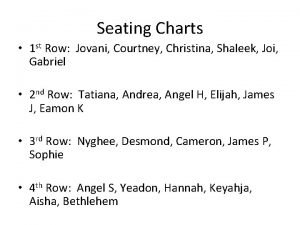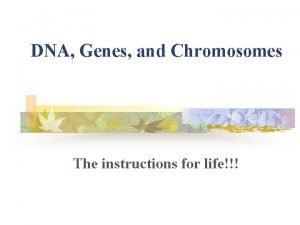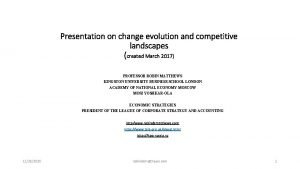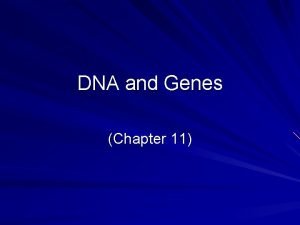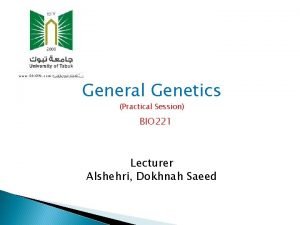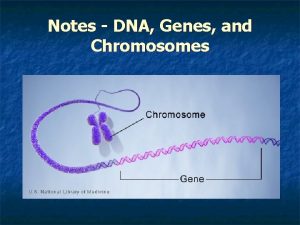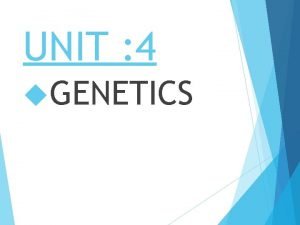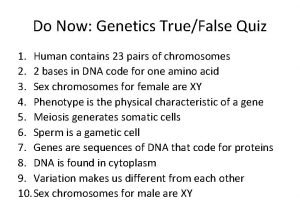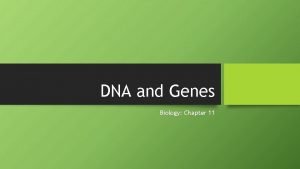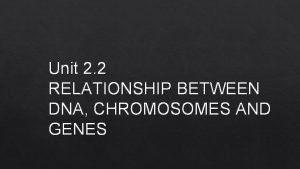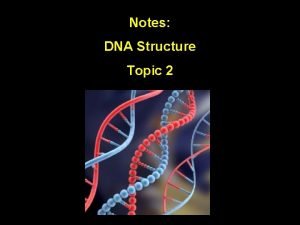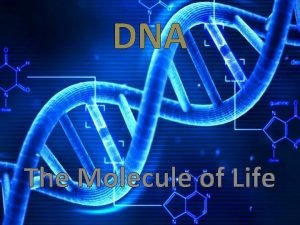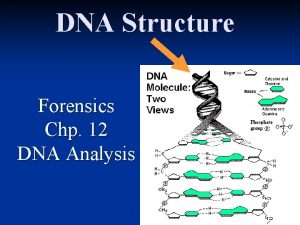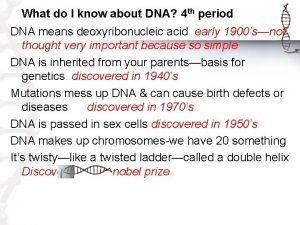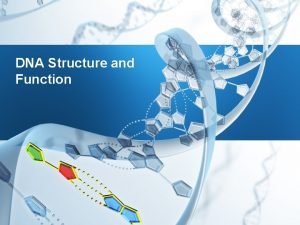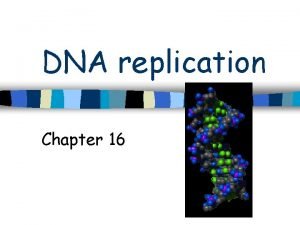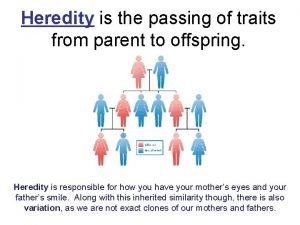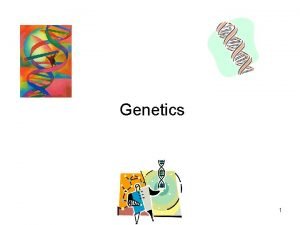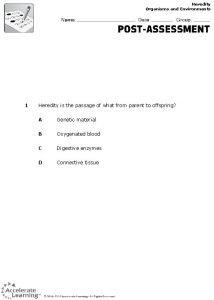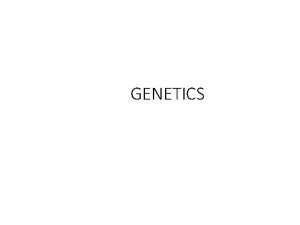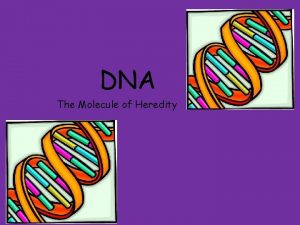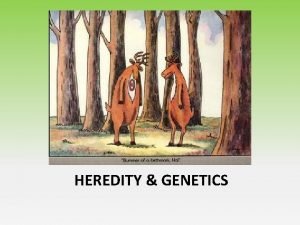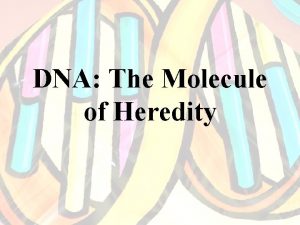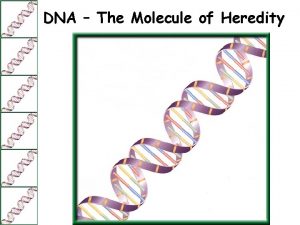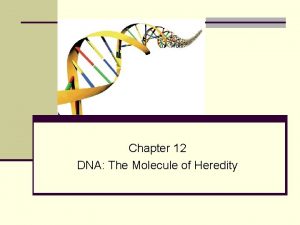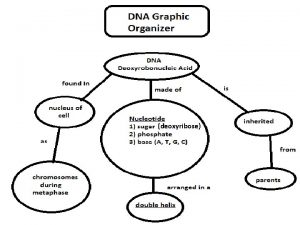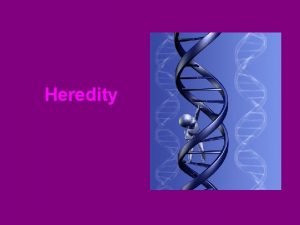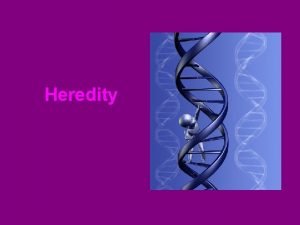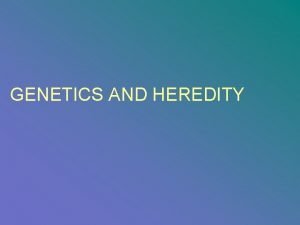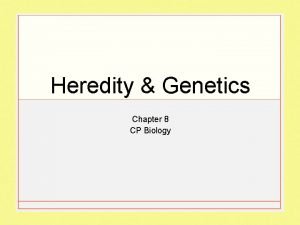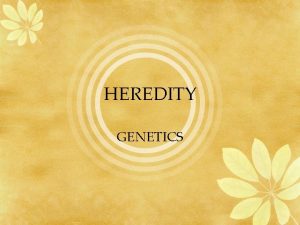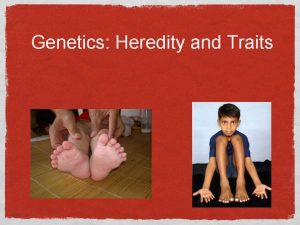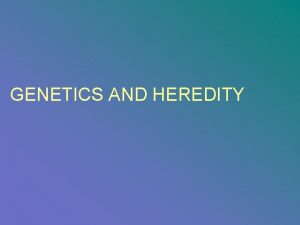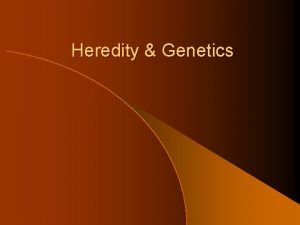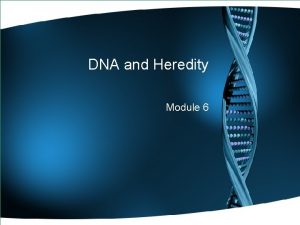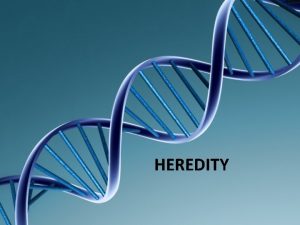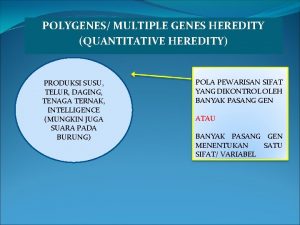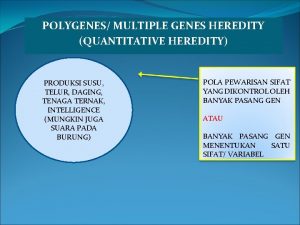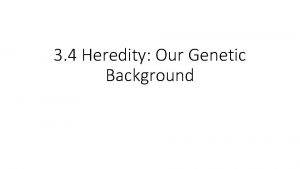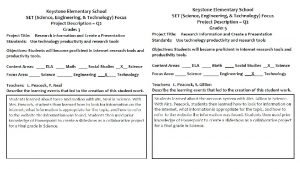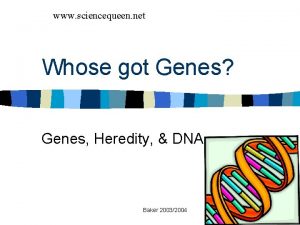DNA GENES DNA the molecule of heredity DNA




























- Slides: 28

DNA & GENES

DNA: the molecule of heredity • DNA ultimately determines an organism’s traits. • Within the structure of DNA is the complete instructions for manufacturing all the proteins for an organism.

• DNA is a very long molecule. • It can hold a lot of information. • It is made out of repeating units called nucleotides.

Nucleotide • Composed of 3 parts. • Simple sugar • phosphate group • nitrogen base

Simple Sugar • In DNA the simple sugar is ‘DEOXYRIBOSE’

Phosphate group • Composed of one atom of phosphorus surrounded by 4 atoms of oxygen.

Nitrogen Base • A carbon ring structure, containing some nitrogen. • Four different nitrogen bases:

Adenine • Symbol = A • Classed as a Purine.

Guanine • Symbol = G • Classed as a Purine

Thymine • Symbol = T • Classed as a Pyrimidine

Cytosine • Symbol = C • Classed as a Pyrimidine

Typical Nucleotide

• Nucleotides join together to form long chains, with the phosphate group of one nucleotide bonding to the deoxyribose sugar of an adjacent nucleotide.

• In DNA the amount of Adenine is always equal to the amount of Thymine and the amount of Guanine is always equal to the amount of cytosine.

1953 • James Watson and Francis Crick discovered what DNA looked like thus enabling scientists to understand how DNA stored information and worked.


Double Helix • Watson and Crick discovered that: • Adenine always bonded with Thymine. • Guanine always bonded with Cytosine.

• The two bonded bases are called complementary base pairs. • This pairing of the bases causes the DNA to twist like a coiled spring (Helix).

• Since DNA is composed of two strands and it has a helix shape it is referred to as a Double Helix.


• All living things have DNA. • The DNA is the same in every living thing. • What makes living things different is the sequence of the DNA

• The sequence of nucleotides forms the unique genetic information of an organism. • A-T-T-G-G-C-T-A-C carries different information than: • T-C-G-G-C-A-T-T-G

• The more similar the DNA sequence between organisms the closer their evolutionary relationships.

DNA Replication • DNA copies itself during the S phase of Interphase. • Watson and Crick discovered that Adenine always pairs with Thymine and Guanine always pairs with Cytosine.

• Step 1 • DNA replication begins as an enzyme breaks the hydrogen bonds between nitrogen bases that hold the two strands together.

• Step 2 • Nucleotides that are floating free in the surrounding medium (inside the nucleus) bond to the single strands by base pairing.

• Step 3 • This process continues until the entire molecule has been replicated. • The result are two identical strands of DNA.

ASSIGNMENT SA 11. 1 problems 1 -6
 Genes is the study of heredity and variation
Genes is the study of heredity and variation Susie roundpants
Susie roundpants Linked genes and unlinked genes
Linked genes and unlinked genes Linked genes and unlinked genes
Linked genes and unlinked genes Homeotic genes vs hox genes
Homeotic genes vs hox genes Chapter 11 dna and genes
Chapter 11 dna and genes Dna, genes and chromosomes relationship
Dna, genes and chromosomes relationship What is agene
What is agene Dna and genes chapter 11
Dna and genes chapter 11 Dna genes
Dna genes Genes chromosomes and dna
Genes chromosomes and dna Genes chromosomes dna
Genes chromosomes dna Dna chromosomes genes diagram
Dna chromosomes genes diagram Chapter 11 dna and genes
Chapter 11 dna and genes What is the relationship between dna chromosomes and genes
What is the relationship between dna chromosomes and genes Which process produces only identical offspring?
Which process produces only identical offspring? Labeled dna structure diagram
Labeled dna structure diagram Dna primerase
Dna primerase Dna the molecule of life
Dna the molecule of life Dna molecule two views
Dna molecule two views Describe structure of dna
Describe structure of dna What is the function of dna
What is the function of dna Griffith 1928
Griffith 1928 Phosphodiester bond in dna
Phosphodiester bond in dna Heredity
Heredity Heredity acrostic
Heredity acrostic Section 3 mendel and heredity
Section 3 mendel and heredity Heredity defines the passage of genetic material from –
Heredity defines the passage of genetic material from – Genetics
Genetics

